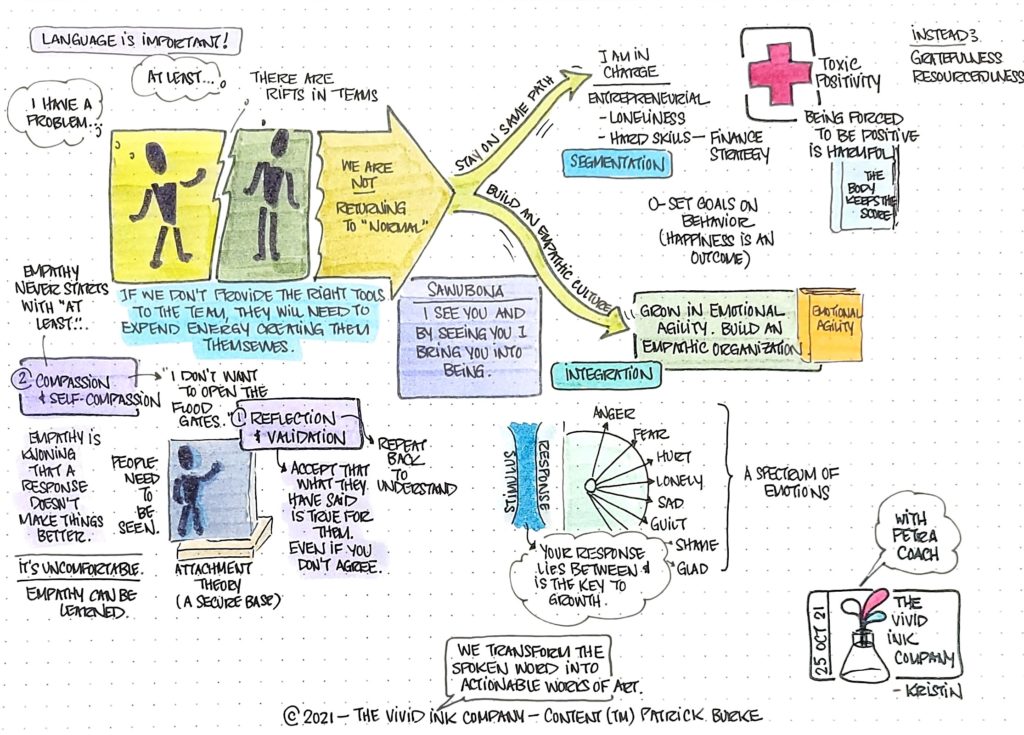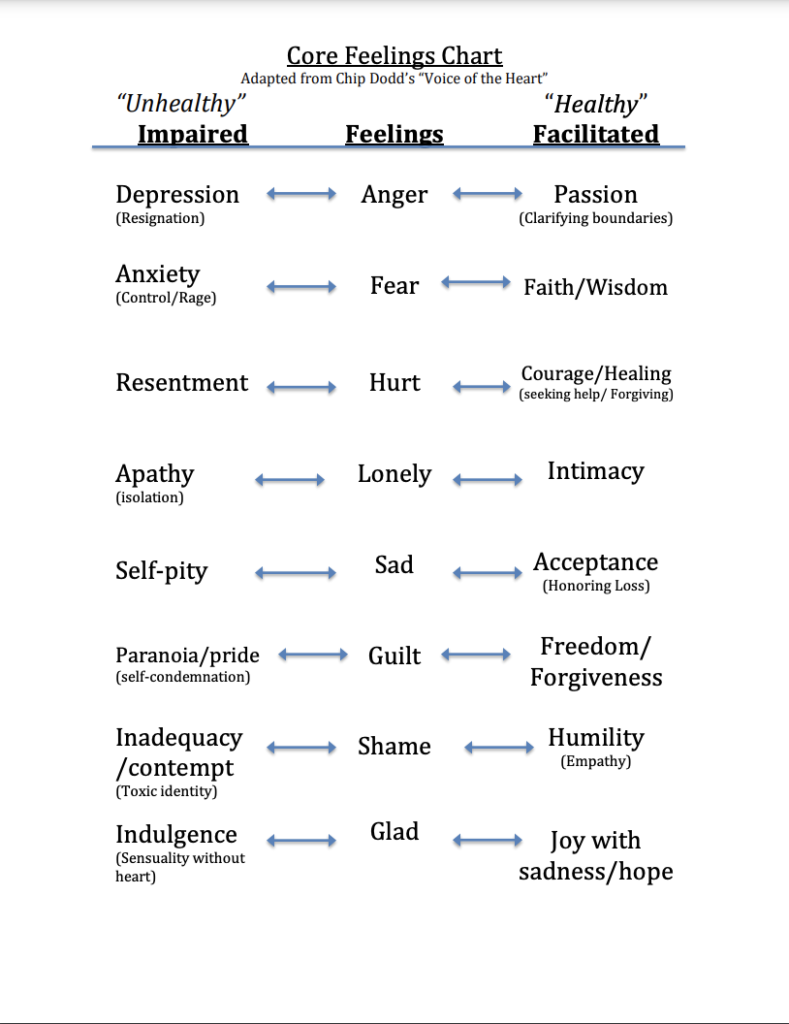Recently, Petra Coach presented a webinar, Emotional Agility: Transformative Leadership by Engaging the Whole Person with Patrick Burke.
You can find the full recording below.
The below Illustrated Model is from The Vivid Ink Company. Kristin McLane and her team transform the spoken word into lasting and actionable works of art. Check them out on Facebook, LinkedIn, Instagram or their website.
Top Takeaways
Introduction
The Problem: Stuck in an outdated mindset of “professionalism” (armor)
Meanwhile, the mental pandemic is here – depression, anxiety and addiction are skyrocketing
The Goal: Culture with stronger collaboration, less stress, better morale, where people bounce back quicker
2 Paths Leaders Can Take
1. Status Quo/Superhero
- “I have the plan” “I’m in charge”
- Turns down the volume on our own feelings and limits ability to connect with others’
- Entrepreneurs are especially vulnerable to this
The pandemic has exposed the flaw in the trend of hard skills being more important than soft skills
Toxic Positivity: forces positivity undermines resilience
- People who acknowledge and accept their emotions are proven to be healthier
How to Reduce Toxic Positivity
- Write what you feel
- Make goals of behavior not feelings (the feeling is the outcome of achieving the goal)
- Making the best of a situation is not the same as toxic positivity
“We are still suffering side effects from business theories of the 80s and 90s” – Simon Sinek
When leaders create an organization where the conditions are wrong, teams are forced to find their own resources to protect themselves outside the organization
Companies are in two buckets right now: attraction or attrition
Book Recommendations:
The Body Keeps the Score by Bessel van der Kolk M.D.
Humanocracy by Gary Hamel and Michele Zanini
2. Return to Better
This is your #1 leadership opportunity to return to “better”
- See your teammates as humans not resources for productivity
- People bring their whole selves to work
- Greater personal connection in our organizations leads to safety, being known, widespread resiliency, agility
Emotional Agility vs. Emotional Fragility
How to hold space for people we’re leading in environments when we still have to get stuff done
- Pretending not to feel anything leads to fragility
- Psychological well being depends on integrations
Segmentation vs. Integration
We need to be healthy with ourselves first so we can be healthy with others
“Do your people feel seen?” -Brené Brown
Curiosity is a cornerstone for empathy toward other people
Emotions are data not directives
- Think and identify emotions before acting
Book Recommendations:
Emotional Agility by Susan David
Dare to Lead by Brené Brown
Tools for Improving Emotional Agility
Reflection vs. Validation
- Reflection = repeating what you’ve heard to confirm understanding – that you “see” the other person
- Validation = accepting that what they have said is valid for them, even if we do not agree with them
Both/And
Unwillingness to embrace both the beauty and tragedy that lives within us leads to emotional rigidity
Emotional Granularity = the power of linguistics
“Between the stimulus and response there is a space. In that space is our power to choose our response. In our response lies our growth and our freedom.” -Viktor E. Frankl
- Example of that space: I am sad vs. I am noticing I’m feeling sad
Feelings Chart
Correlation between children ages 2-3 who can label their emotions, and delayed gratification – which is the cornerstone of grit
Adult Feelings Chart:
Kids Feelings Chart:
Attachment Theory
- Kids will wander farther and farther from their parents as they develop, and still come back
- Usually for parents but there’s an analogy of this for work
- Great leaders make people feel safe
- Do they feel safe at the “home base?”
Compassion/Self-Compassion
Redefining Courage
- Wading through the muck with your team, not being the superhero
- Courage is the leader who says “I don’t have all the answers”
- Like leadership, empathy is not an inherent trait, but one that can be learned/grown/practiced
- Foregrounding: recognition so employees can see the presence of empathy being celebrated
- Identify connectors – people who can create cohesion by leading with empathy
Like what you see? Register for our upcoming workshops & webinars today!







